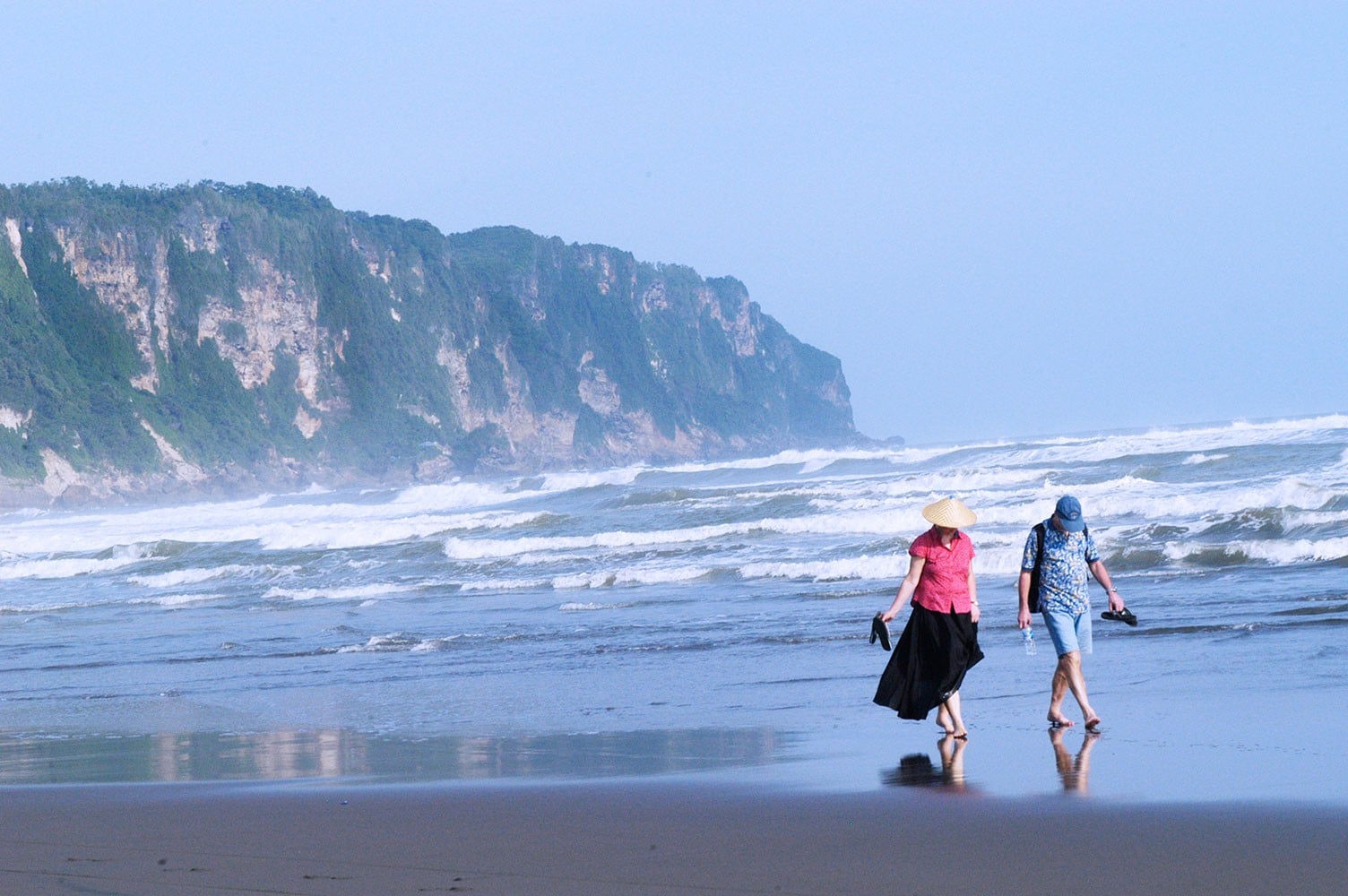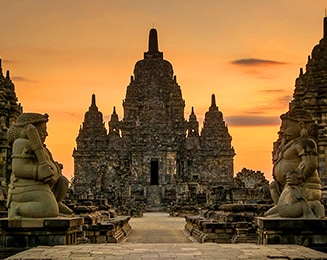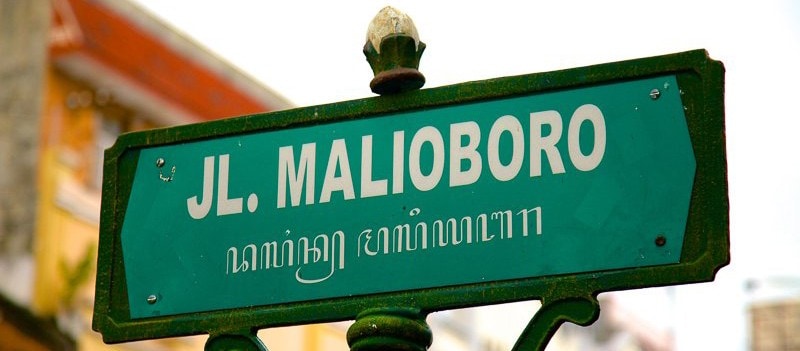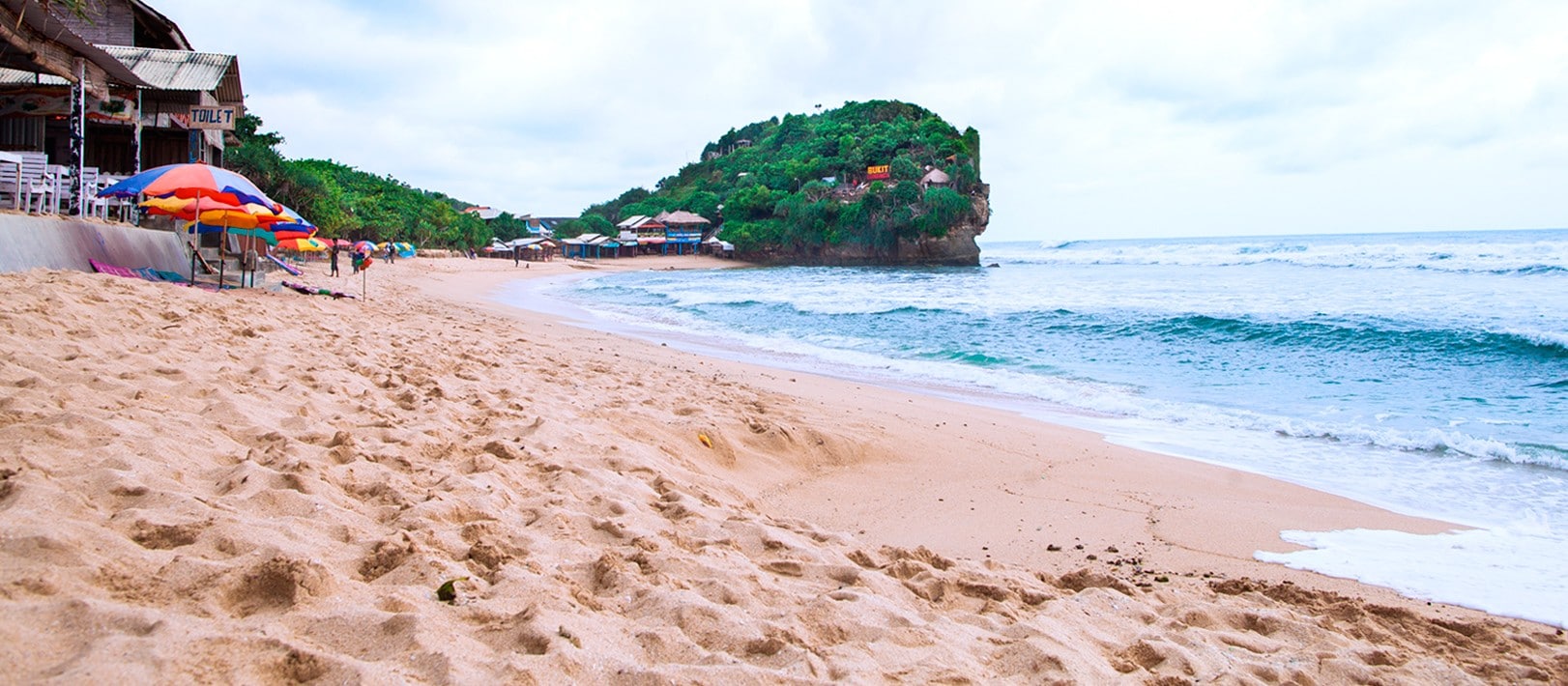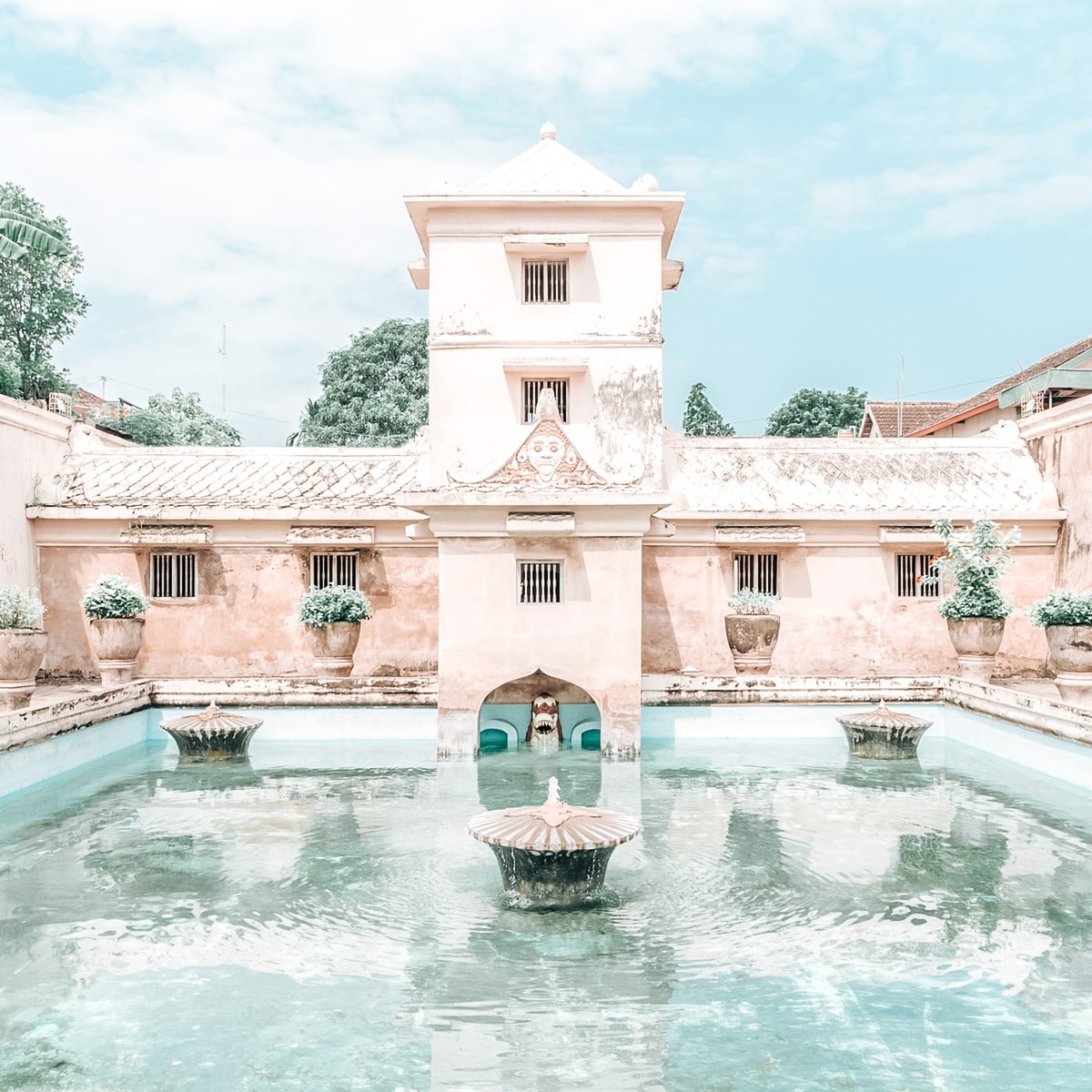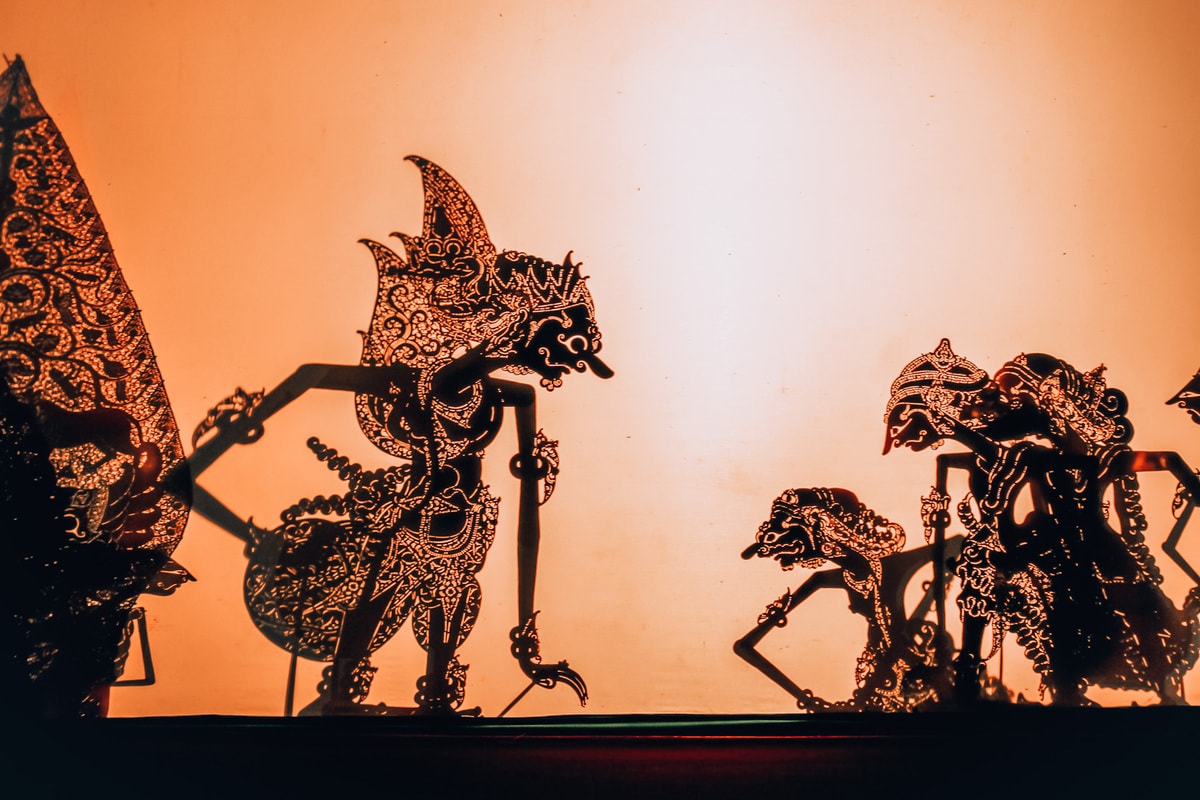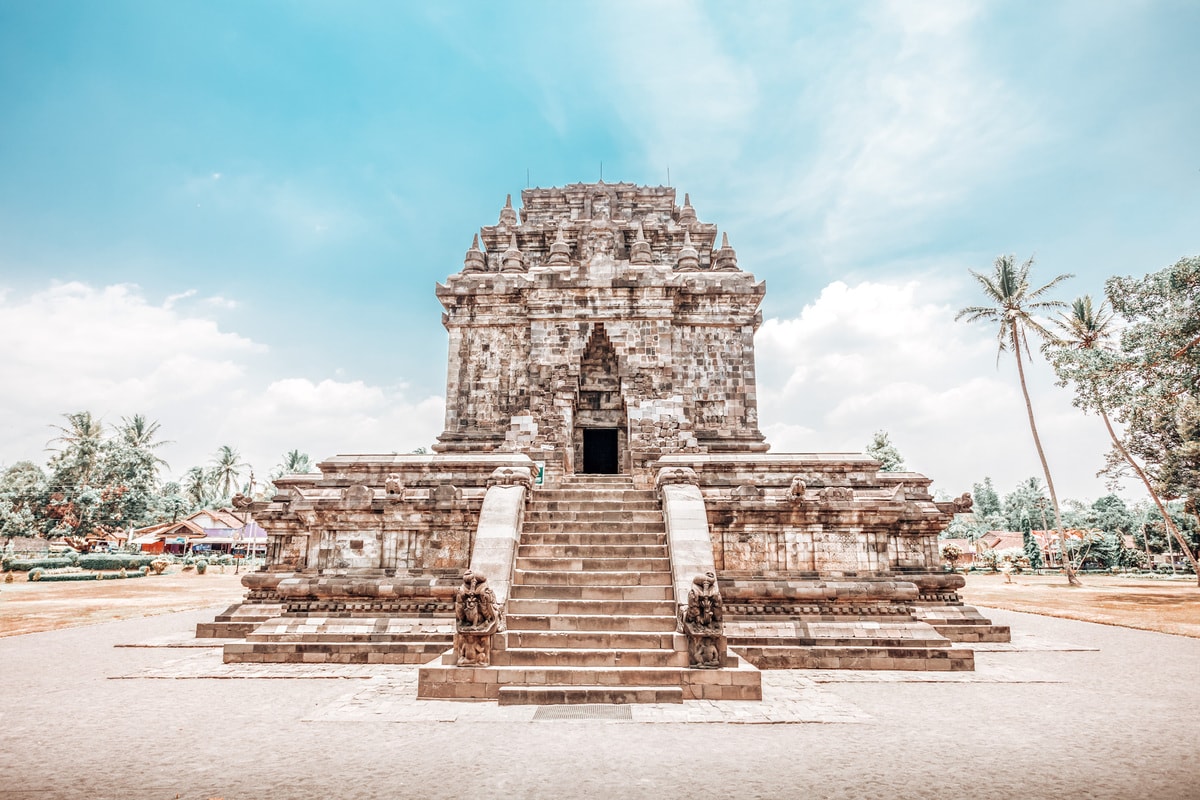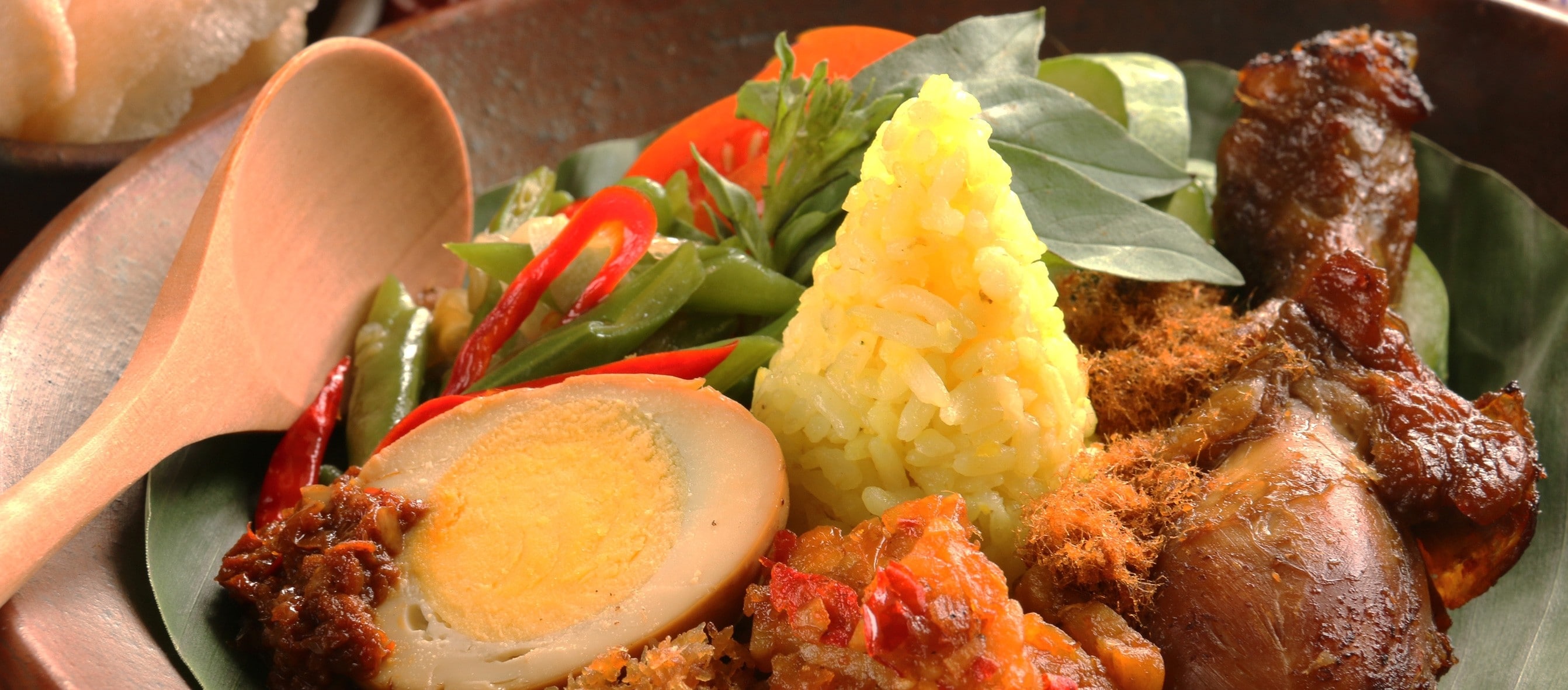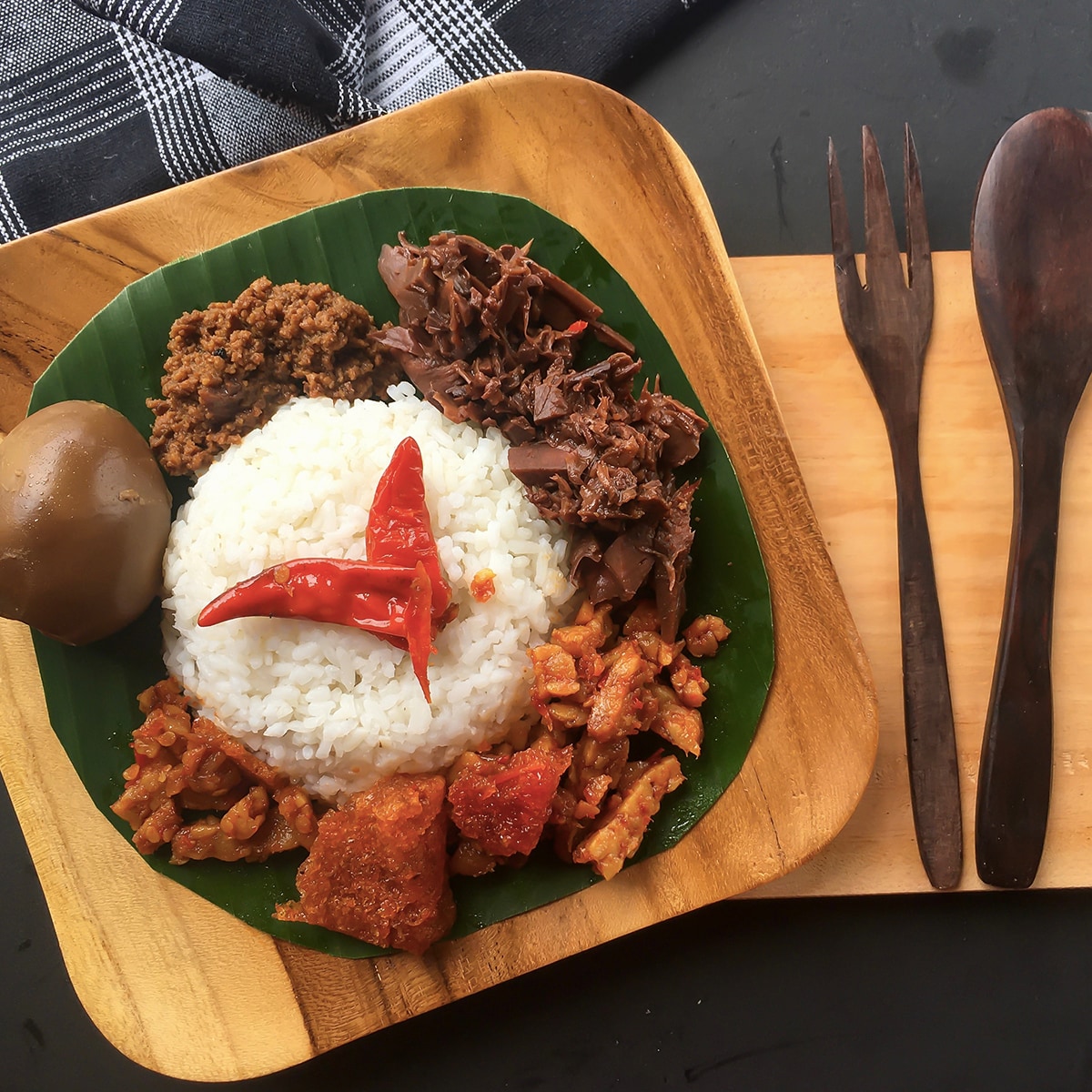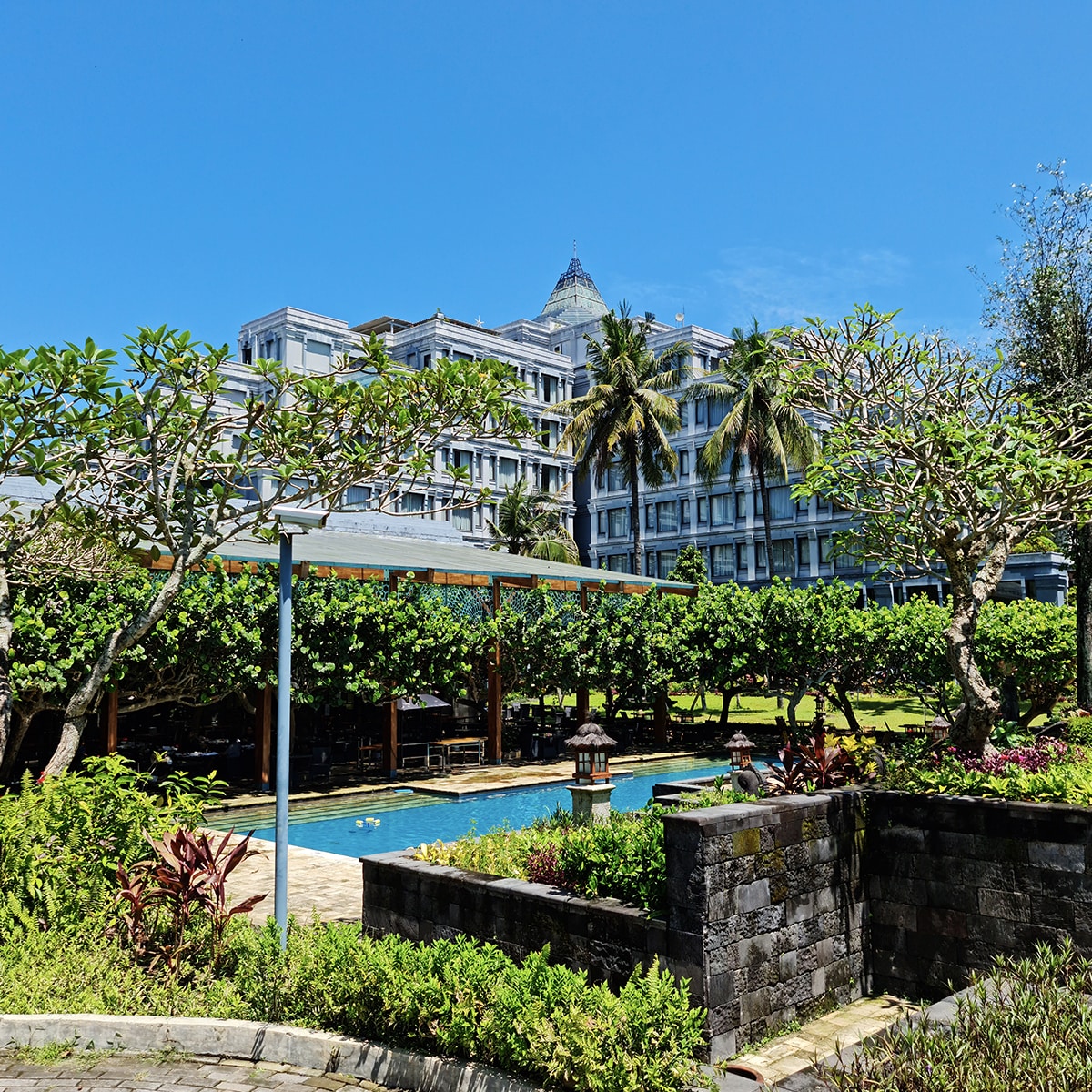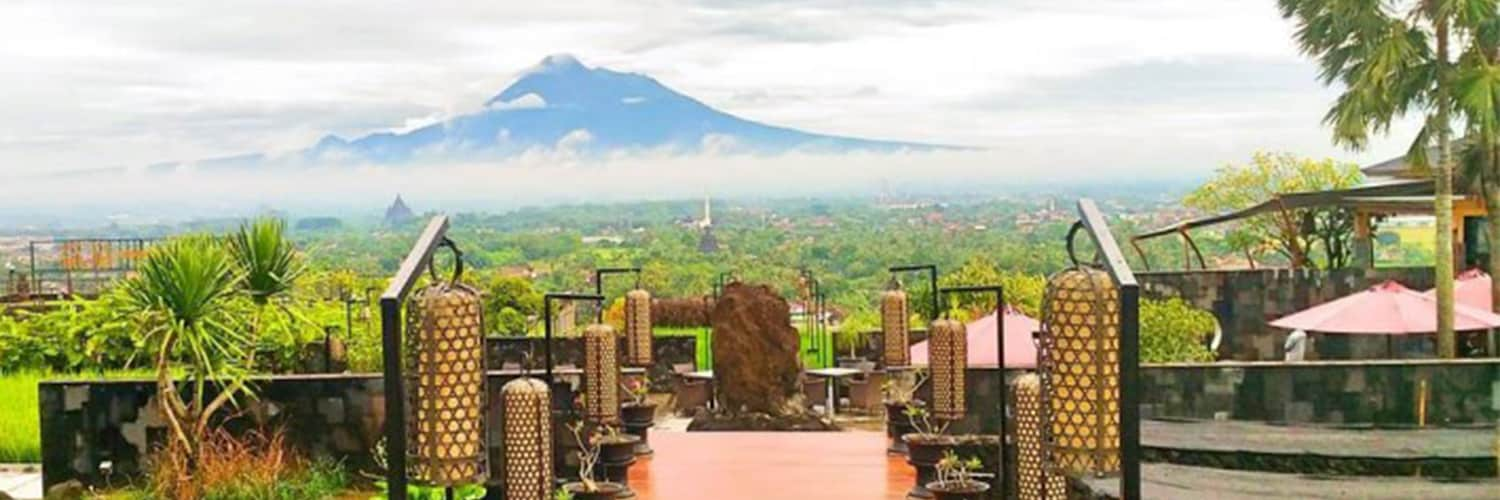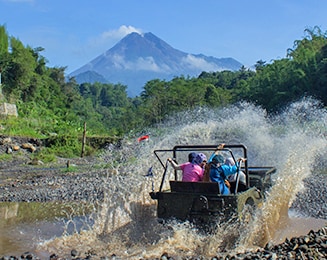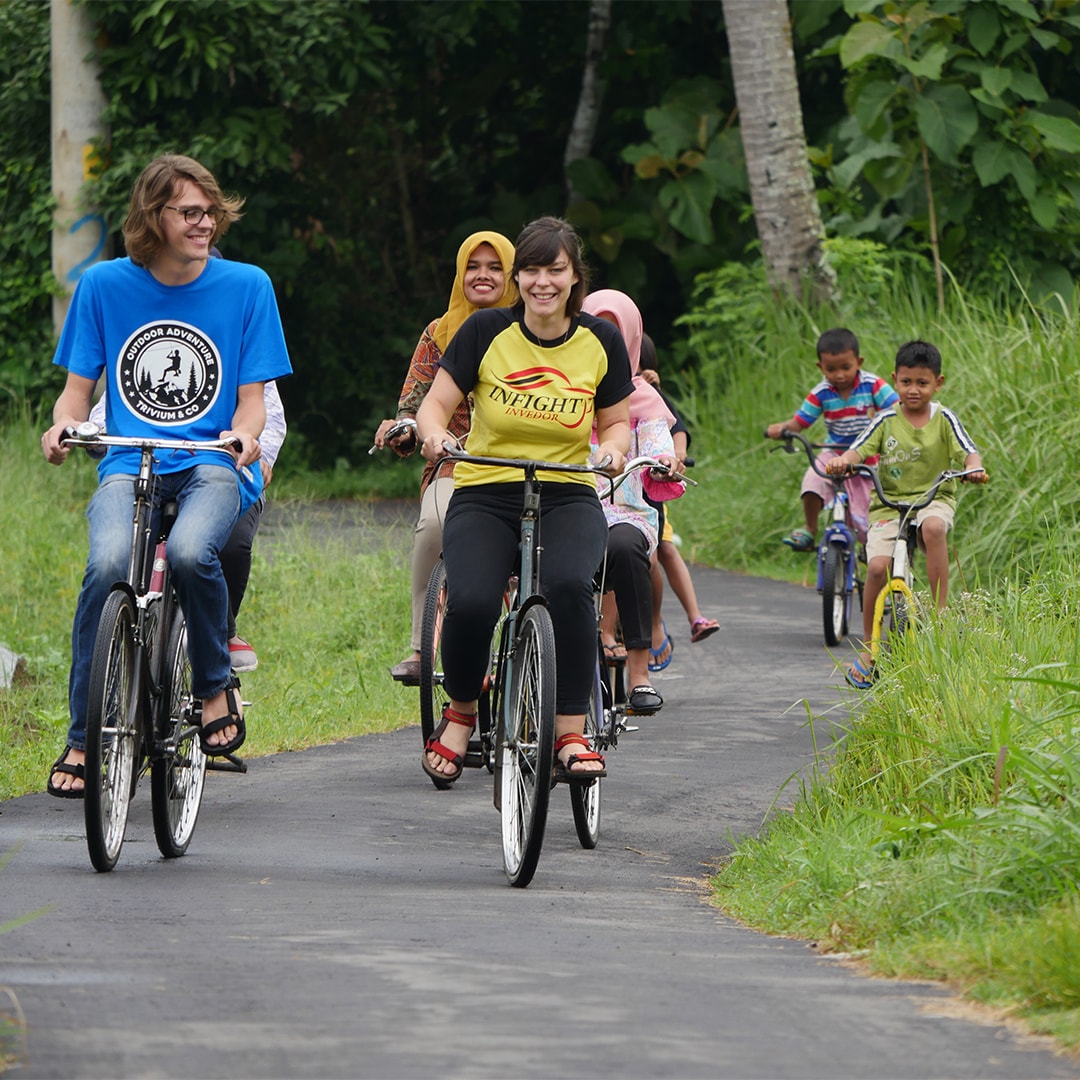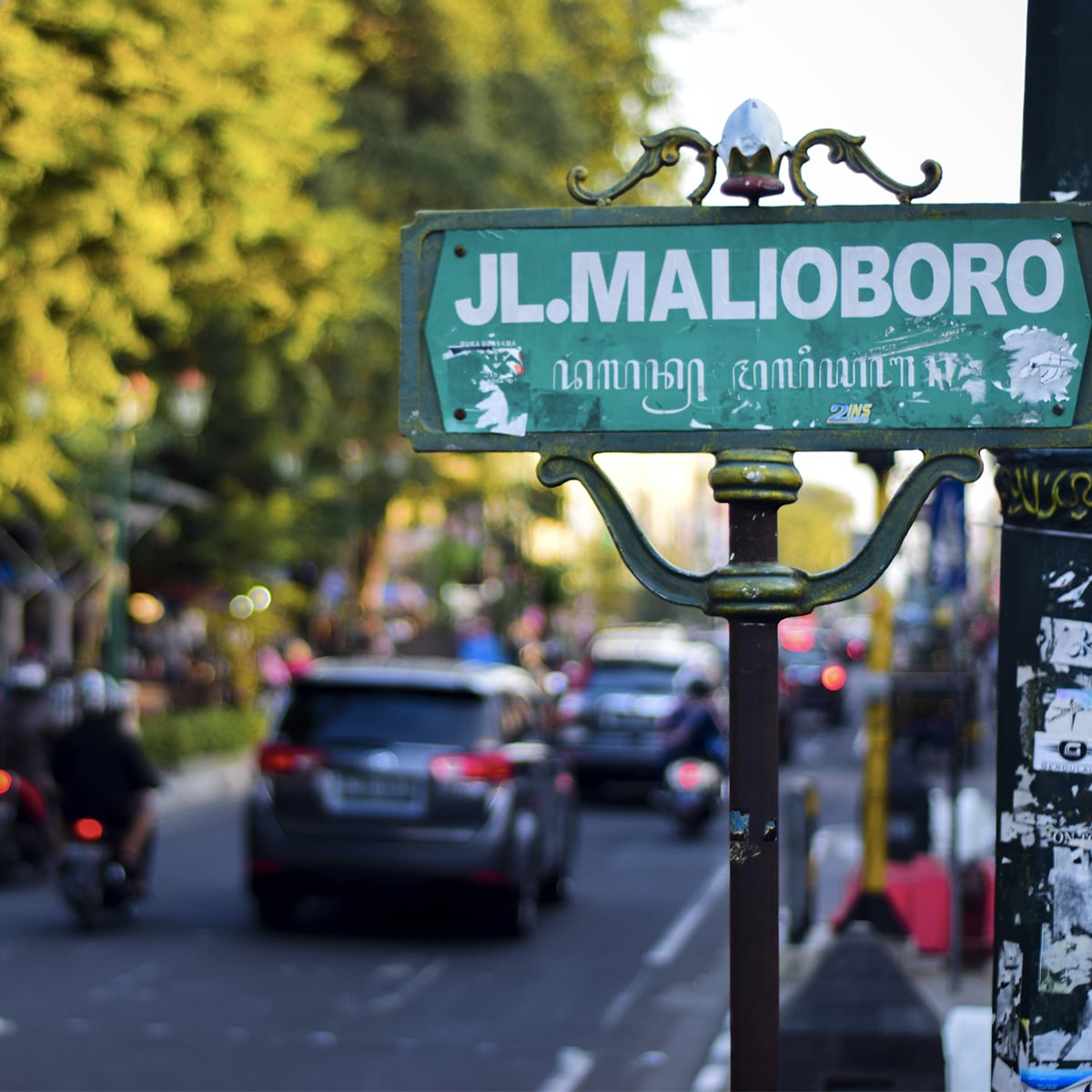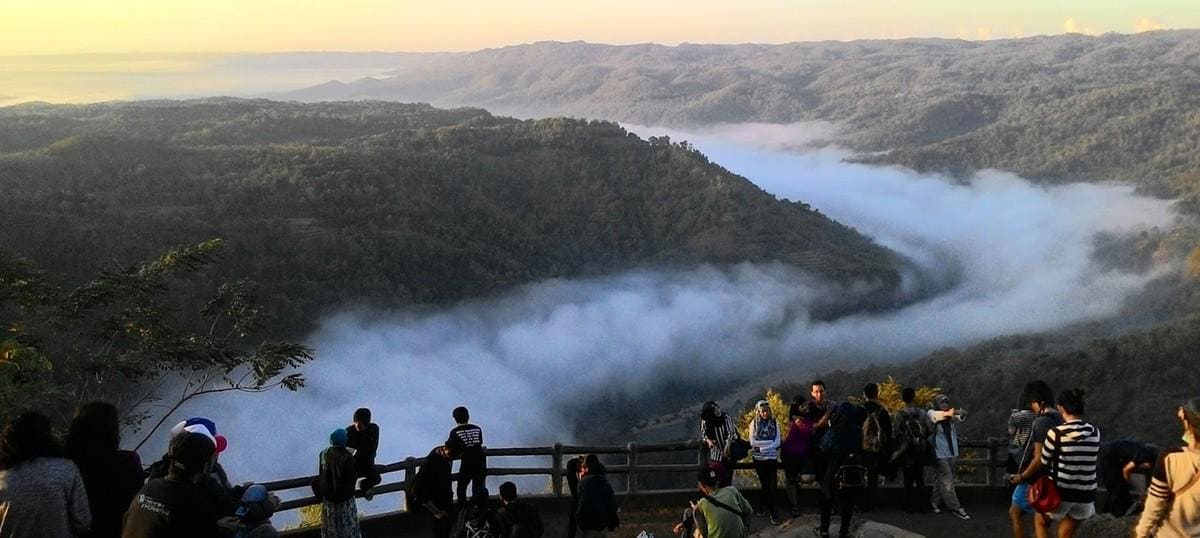The Kraton (also spelled keraton or karaton) or the Palace of Yogyakarta, is a grand complex that was meticulously planned to reflect the Javanese cosmos.
This elegant complex of pavilions was constructed based on ancient beliefs, of the connection between the God, human and the natural realms. Each feature holds a special symbolic meaning related to the Javanese worldview, who consider the importance of Mount Merapi and The Indian Ocean.
The Kraton was built in the center, facing directly north towards the majestic Mount Merapi. Its south side was built facing the Indian Ocean, believed to be the abode of Kanjeng Ratu Loro Kidul, the Queen of the South Seas and the mystical consort of the Sultan.
This splendid example of traditional Javanese architecture has no equal. The basic and original layout of the main building of The Kraton began its construction during the reign of Sultan Hamengku Buwono I, in 1755 - 1756.

Image Source: Shutterstock
Other surrounding pavilions were then gradually expanded by the successor of the throne. The official symbol of the palace is named Praja Cihna. It depicts important elements that radiate a philosophical meaning. The Javanese lettering in the center is “ha” and “ba”, the acronym of Hamengku Buwana. The red is a symbol of courage and vigilance to value the truth, while the gold is a symbol of majestic splendor.
A green square called Alun-alun Lor or the north square is set to be the front side of the palace, with large banyan trees guarding its center, named Kyai Dewandaru and Kyai Wijayandaru. Alun-alun Kidul or the south square is located at the other side of the palace’s north-south invisible horizontal axis.
This palace was designed to be more than just a royal residence. It was built to be a focal point of the Sultan’s entire kingdom. When a sultan passed away, the cortege will leave by the southern gate and head its way to the royal cemetery located in Imogiri.
Today, the Kraton is a piece of living history and tradition. It continues to be used, both as a home of the Sultan as well as for other important ceremonial and cultural functions of the Yogyakarta court.
Sitihinggil is the highest level of the Kraton area, where the formal ceremonies like the coronation are held. There are two Sitihinggil pavilions in the palace area.
Sitihinggil Lor is located on the north side and Sitihinggil Kidul is on the south side, that later was repurpose from the location of the army’s rehearsal point, to become a monument dedicated to mark 200 years of the Yogyakarta sultanate named Gedung Sasana Hinggil Dwi Abad. On weekends, you can enjoy art performances such as music, dance and the special wayang kulit or leather puppet show.
Near this building is the Alun-alun Kidul, a destination renowned for the festive evening ambiance and the mysterious Masangin tradition. Said to be an acronym of “masuk diantara beringin” or literally “entering between the beringins”, this is definitely one of the signatures local experience to try.
In this test, you will only need to walk between the two sacred beringin or banyan trees, and if you succeed, then you are considered to have a pure heart and will have any of your wishes granted. The only twist is, you have to be blindfolded to do it!

Image Source: Shutterstock
After a few tries, you can just linger in the open square and enjoy all the fun atmosphere surrounding this famous spot.
In The Kraton complex, there are 7 specific zoning that consists of several pavilions, each with designated purpose and is separated by gateways. The sultan’s residence resides at the center Kedhaton area, named Kraton Kilen.
One of the interesting highlights inside The Kraton is The Hamengku Buwono IX museum. It holds a collection of memorabilia and significant items that belong to the late father of the currently reigning Sultan Hamengku Buwono X, who is also the Governor of the Special Region of Yogyakarta until this day.
There are also painting museum, regalia museum, and royal carriage museum. Each of these beautiful royal carriages has specific names and interesting historical value. They are also used for special occasion such as the royal wedding ceremonies.
The Sultan’s title is not the only hereditary position in The Kraton. You can also meet the Abdi Dalem, who are the faithful caretakers of the royal households. This noble devotion is an honorable pride that is passed down from a generation to the next.
Even with Yogyakarta’s modernization nowadays, the Kraton of Yogyakarta continues to be respected by the people of Yogyakarta. Although the majority of Yogyakarta are Muslim, ancient tradition and mysticism still hold an important part of The Kraton’s rituals.

Image Source: Shutterstock
Periodically, special ceremonies are held to clean the sacred objects in the Royal collection. In the afternoons, after the palace is closed to visitors, women in traditional costume can also be seen respectfully sprinkling water and flowers on the pillars, lighting incense to cleanse The Kraton from impure intention and evil spirits.
Get Around
Visitors can explore the palace’s interiors on foot. The palace is open to visitors from 08.30 am to 12.30 pm except on Fridays and Saturdays which it closes at 11.00 am. It is closed in the afternoons. Note that there are also special rules made to be respected when you visit The Kraton, so please make sure you follow them for a memorable experience in Yogyakarta.
After visiting The Kraton area, you can also stroll around the nearby attractions, such as Malioboro Street and Beringharjo Market. Taman Sari complex is also related to the royal history, and it consists of a beautiful water castle and a unique underground mosque named Sumur Gumuling.
Address:
Jl. Rotowijayan Blok No. 1, Kota Yogyakarta, Daerah Istimewa Yogyakarta
Get There
Located about 11 km from Adisucipto International Airport, The Kraton can be accessed by cars, taxi, bus and local transports like becak and andong. Becak and Andong - a horse-drawn cart - ride are the fun way to explore The Kraton area while experiencing a glimpse of Yogyakarta’s city vibe with its warm-hearted locals.








